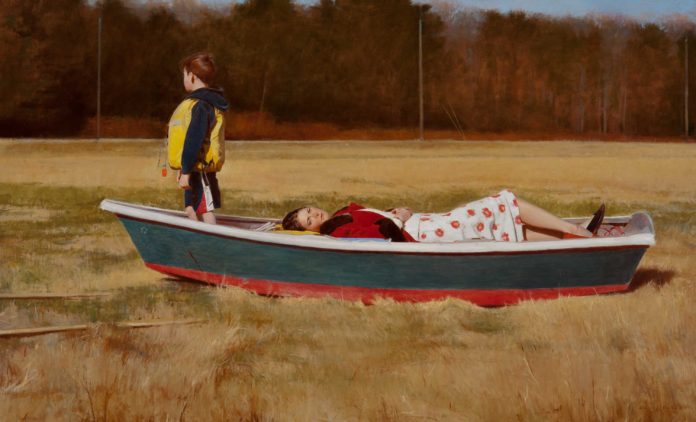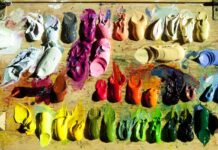“A complicating aspect of realist painting is that there is much that one does not or cannot know or see, yet which is immensely, obsessively interesting—and which is ultimately the whole point of painting.”
Beyond Observation
By David Baker
As I share my thoughts on the subject of painting, I think it is important to begin by saying that I am a relativist at heart, and certainly acknowledge and respect other value systems as they are applied to painting. After years of building the technical and conceptual parameters of my own painting—an architecture of sorts—I am now much more able to throw open the doors and welcome disparate views.
I value draftsmanship and the craft of indirect painting, but as I have become more confident I have sought additional technical challenges, delved deeper into my own motivations for painting, and even welcomed ideas that I may once have dismissed.
That said, I am going to get a bit preachy here for a moment, so bear with me (or just skip ahead a few paragraphs). In the first section I’ll describe how I think about my own painting. I will then offer a bit of a framework for thinking about painting writ large, and then conclude with the nuts and bolts of actually making a painting (stay tuned for an upcoming realist painting step-by-step).
A complicating aspect of realist painting is that there is much that one does not or cannot know or see, yet which is immensely, obsessively interesting—and which is ultimately the whole point of painting. Walking the line between painting the observable and applying one’s experience and knowledge of the world to those things just outside our grasp can be tricky.
But approached deliberately and consciously, an artist can reach beyond the visual to access and engage an empathetic response to subjects that is perhaps unattainable if one restricts oneself too narrowly to the observable. The painting process allows us to push back on the ephemeral nature of experience and proclaim, “This matters to me. I felt this. I am here.”
The adage to “write what you know” modified to apply to painting—“paint what you see”—can certainly yield impressive results. However, I would offer a challenge: we should not be content simply with the visible. We should not hide behind Pure Observation as a philosophy, but instead admit our choices, idiosyncrasies and vulnerabilities, which serve to reveal our true selves in our work.
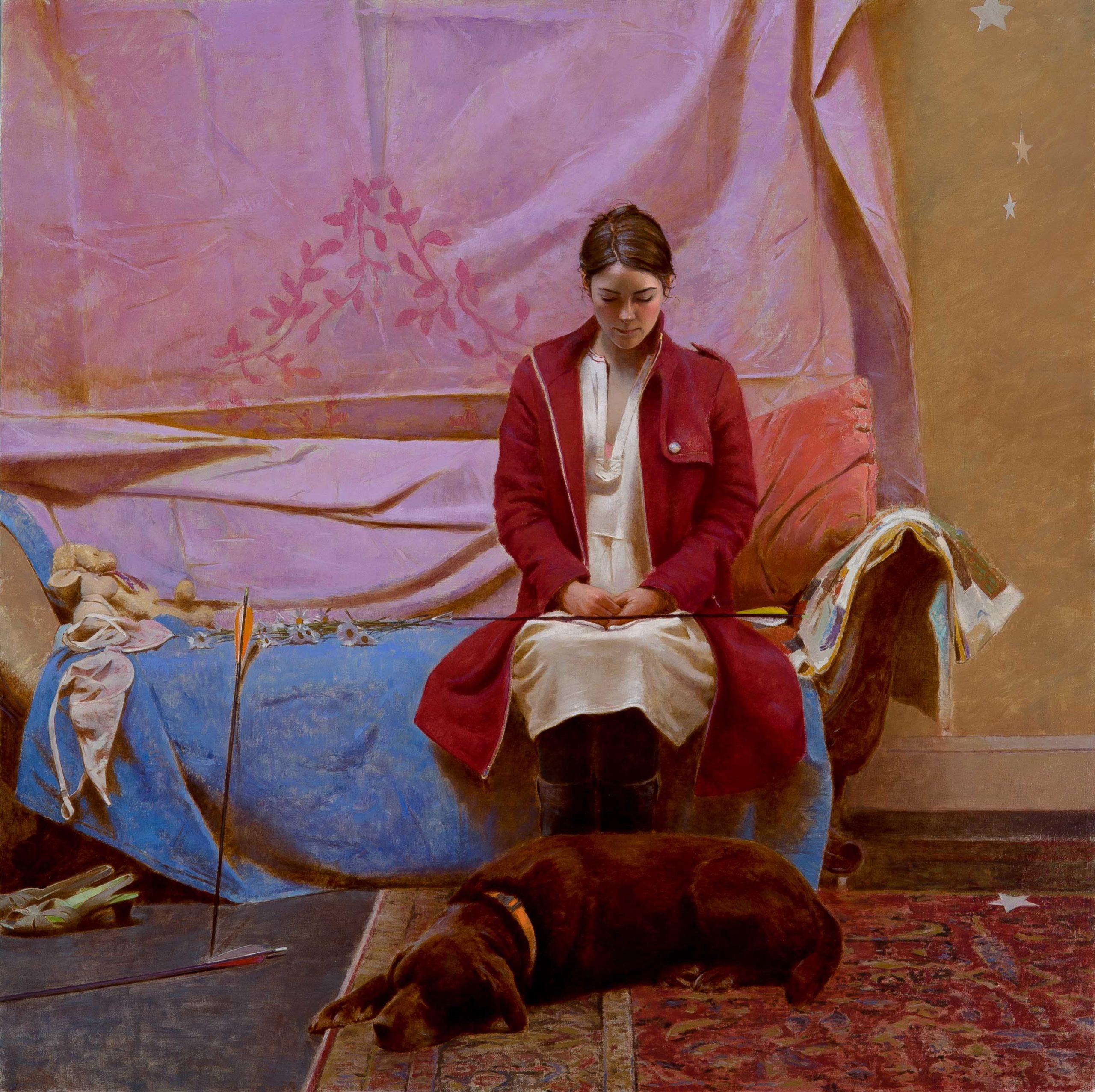
It is perhaps too obvious to make the statement that painting is fundamentally a symbolic language. Of course, building an image relies on the common ability to read this language, but reading the language is complicated by the fact that everyone has unique experiences that underlie or distort their interpretations.
In spite of my intentions, I have learned again and again over the years that no matter what my thoughts were as I constructed an image, the varied responses I hear from viewers confirm that the symbolic elements of an image function differently for each viewer. There are certain tropes that are common enough to feel universal, but as we know, anything that is depicted has multiple meanings (see Magritte, et al.), so we are left with no choice but to anticipate the multiple valences of an image. Armed with this knowledge, we can embrace the imprecision and subtly manipulate the interpretations.
What we can do as conscious and savvy painters is to foster a strong sense of empathy and approach every scene with a sense of innocence. The creative mind can then explore the myriad meanings of a scene as potential narrative sequences. All this is my way of encouraging one to ask bigger questions and put more of oneself into one’s work.
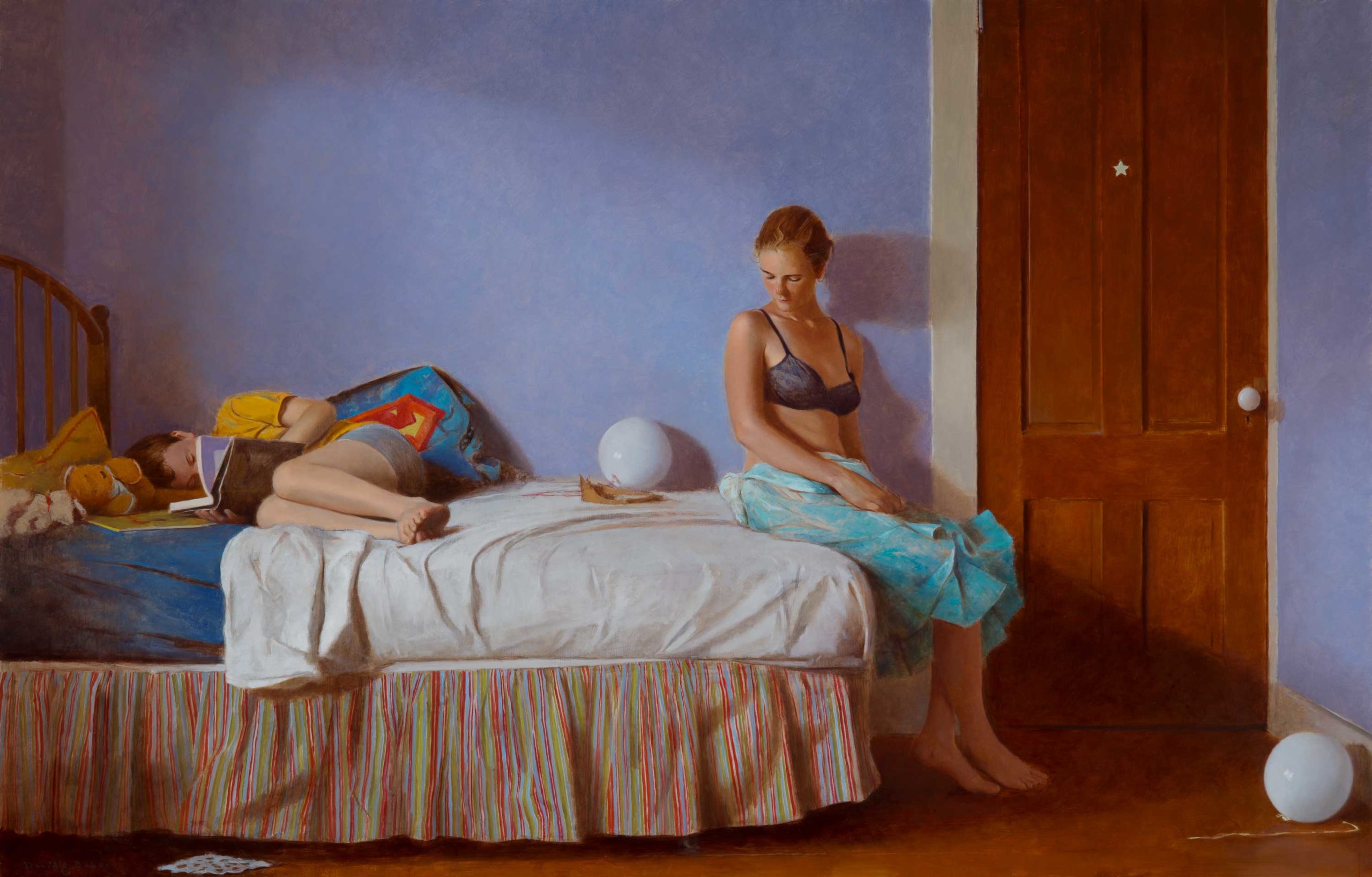
A Deceiving Documentary
In a film class I was first exposed to the idea that a documentary is more deceitful than a fictional film. In the documentary, the conceit of objectivity is used to engage and manipulate the viewer into accepting certain elements as true. Realism/Naturalism in painting can be likened to the documentary in filmmaking. By introducing precision and lush detail into a painting the artist can draw the viewer unknowingly into a constructed vision of the world—the mask of truth provided by the specificity solicits sympathy and, ultimately, perspectives and insights not otherwise easily achieved.
In concert with this idea is the belief that from the specific springs the universal. In my own painting intricate patterns and local settings—including friends, family, and neighbors as models—are all deliberate choices that serve to seduce the viewer into sympathy with the world of the image.
My paintings may have their roots in the grit, stress, and ordinary beauty of quotidian demands—the paintings are anchored by actual places, objects and people. But I deliberately conflate reality and fiction to suggest ambiguous narratives within a subtly symbolic image. The outcome, rather than clean, iconic meta-images or narratives, are paintings with more purposefully modest, tangled, local threads.
Another analogy that muddles across my mind when thinking about painting is not a perfect one, but you’ll get the idea. Looking at writing and literature as a model, paintings can take various forms: from the quick oil study as a sort of poem to a more complex figure composition as a novel, or even the portrait as the biography.
The analogy falls apart here and there, but it is an attempt to understand what my goals are as I embark on a painting. If, for example, I’m painting a small one-sitting study from life, I don’t expect an epic. So, while there are short stories and poems and essays in the world of painting, so too are there great, expansive novels. There are works of fiction and of non-fiction (though again I may argue that most non-fiction is really just fiction though the author may not see it as such). There are stand-alone works and there are trilogies (triptychs?), and there are ongoing series.
While all this may seem like a strange hierarchical exercise, I am careful to strip the categories of any qualitative value. It seems pointless to compare an academic figure study to a complex genre scene. The exercise can, however, help clarify one’s goals, and also serve as a lens with which to understand and evaluate other works of art without asking the pointless question: “Is it better?” For one artist to value his or her method, inspiration, or genre is fine, but to give it a qualitative value over another’s is not.
Allowing paintings to exist without needless comparison makes for a rich landscape of equals rather than competitors.
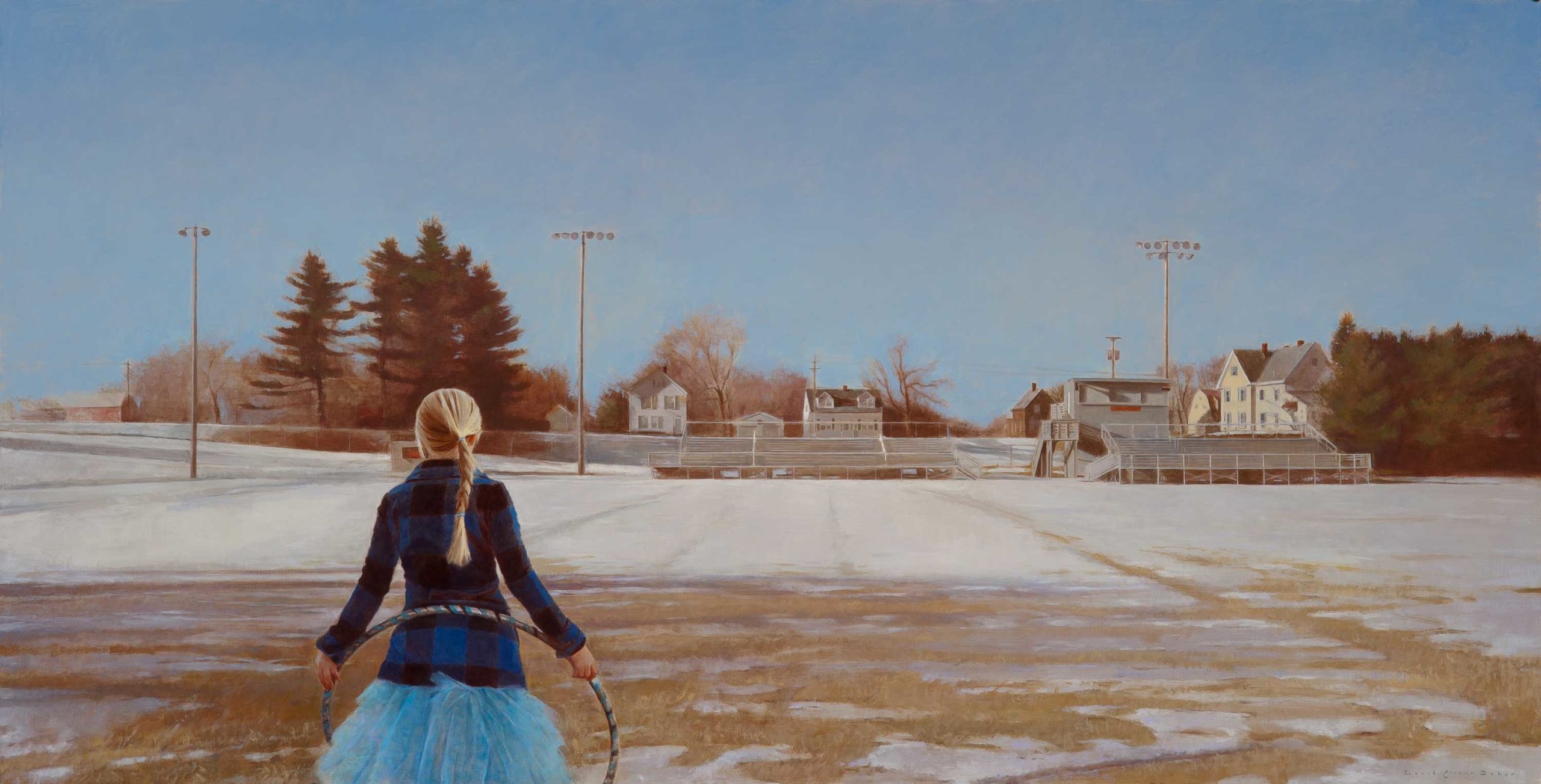
PROCESS
Here’s the official line: My paintings are the result a lengthy process of collecting and cataloging narrative and visual ideas around a theme. I begin with jotting down notes, sometimes even a tentative title for a piece. Once the ideas coalesce into a proto-image, I turn to my sketchbook to draw and to make notations.
Once the nascent image has become a sketch, the addition and subtraction of new elements continues on the fringes of my consciousness over several months. At this point I can really begin to focus in how the painting will actually look. I will hold the image clearly in my mind and take it along while I walk in the woods, putter in the evening, or even drive down the coast.
At work in my studio, I continue to modify the image as I paint—combing through art history, literature, photography, popular media, and music. In fact, often while painting, a seemingly random snippet or idea causes a burst of discursive thought that eventually is layered into my thinking about the painting. I truly open myself to inspiration from many varied sources, and given my love of children’s book illustration, perhaps fittingly, some moments of inspiration have arrived while I read to my children—oftentimes stories that I’ve read several times. At these times I may be absolutely in the moment, yet struck by an instant of clarity that reveals an archetypal image and triggering a cascade of narrative possibilities.
Here’s the reality: When it comes to actual process, it is fairly simple: sketch, draw, draw some more, paint, think, paint. Easy, right? Ok, I’ll fill in some details.
Once I have a solid idea of how I want a painting to look, I will hire a model (or badger my wife and children) to come to the studio to pose. Depending on the pose and the setting, I’ll make some drawings and take some (okay, lots of) photos. Once I’ve had time to mentally digest all the images, I usually have a much clearer idea of how the painting can look, and am hopeful that I have something I can use as a primary reference.
I make no attempt to get all the elements in place, but rather use the one primary image as a nucleus around which I can add and subtract elements as the painting evolves.
Once I have the main elements more or less figured out, I draw a few studies. For smaller paintings the studies are graphite on white Arches or Fabriano paper. For larger paintings, I use graphite and chalk on big sheets of light blue Hahnemuhle.
I am definitely guilty of having a short attention span, so once the sketch is off and running, I don’t linger for long. Time to start the painting! The primary reasons for the sketch are: (1) work out the scale; (2) work out the composition; (3) struggle through the difficult passages as a sort of dress rehearsal for the painting; and, (4) make a small piece that I can keep as evidence that I actually accomplished something in the studio.
Though it may seem silly, I use the sketch to place value on my thinking time. As much as I value time in front of the easel, more and more I have learned that time set aside for discursive thinking (i.e., daydreaming), observing, and collecting experiences is equally, if not more important.
Once one reaches a level of technical mastery over the medium, one must ask bigger questions. It’s not a luxury I had when I was in my twenties while working on the fundamentals—my brain was too engaged figuring out how to physically make a painting. However, now I find it the most important and rewarding part of my career. There are many other technically gifted painters out there, but there is only one David Baker—with all my idiosyncrasies, observations, vulnerabilities, and life experiences to bring to bear.
To return to the issue of scale, I consider many options when it comes to the size of a piece. I do not use the sight-size technique (especially since I rarely have all the elements before me at once), but rather ask myself, “What is the best scale to convey the idea?” It is perhaps a seemingly minor point, but I do put quite a bit of thought into this, frequently making several drawings before I settle on the scale for the painting—some ideas just aren’t 60” x 60” ideas.
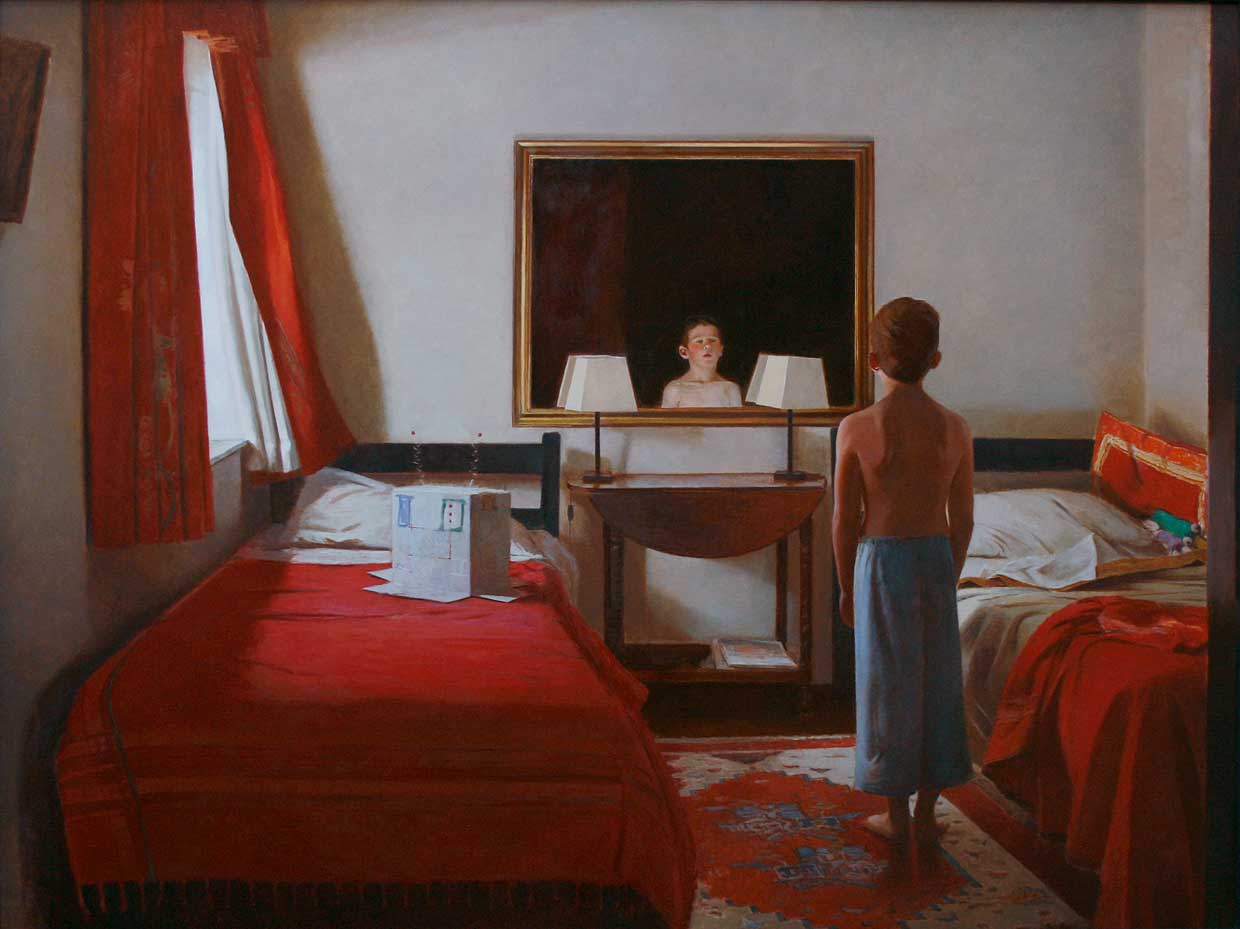
And on to the painting part . . . I do favor panels over canvases. For pieces larger than approximately 30″ x 30″, however, I use canvases. That said, a little bit of texture on the support never hurt, so I paint on linen mounted on aluminum panels. I tone them gray, and then get started.
I transfer the main elements of the drawing to the panel using tracing paper and nu-pastel. Years ago I began to appreciate a finely built-up surface, especially for flesh tones. To be honest, I think it came as a result of the many portrait commissions that I painted. So, I am firmly in the indirect painting camp. Well, maybe not that firmly. I am, more accurately, stingy with my paint, so I apply it in thin layers, waiting several sittings to get to the really juicy color.
Sometimes it’s tough to wait on the color, but as I just explained the concept of delayed gratification to my son, the rewards of waiting can be great. Admiration of the deft and luscious paintings of Sargent, Sorrolla, and the beautiful, obsessively caked canvases of Lucien Freud is fine, but it takes one glance at a Gerard ter Borch, Jean-Léon Jérôme, or Thomas Wilmer Dewing for me to swoon and revert to thin layering of paint.
Most of my paintings start with a monochromatic underpainting of burnt umber mixed with cremnitz white. Successive sessions see the slow introduction of a bit of color: first by adding cobalt blue, cadmium orange, and transparent red oxide, and then expanding to include dioxazine violet, napthol red, and cadmium lemon. As the painting progresses I think carefully about the edges of the forms. I am careful not to define and delineate every contour, but have come to play a game of lost edges. That is to say, I make sure there are passages that function both as places for the eye to rest and to support the more crisply described passages.
Once the image is more fully developed, I can also be more deliberate in applying deft little touches of paint. I sometimes envy the extremely facile, almost athletic-looking touches of alla prima painters, but there is a balance and a sparing use of those touches that I’ve come to realize is just very me.
Connect with David Baker at davidgbakerpainting.com.
Visit EricRhoads.com (Publisher of Realism Today) to learn about opportunities for artists and art collectors, including: Art Retreats – International Art Trips – Art Conventions – Art Workshops (in person and online, including Realism Live) – And More!


